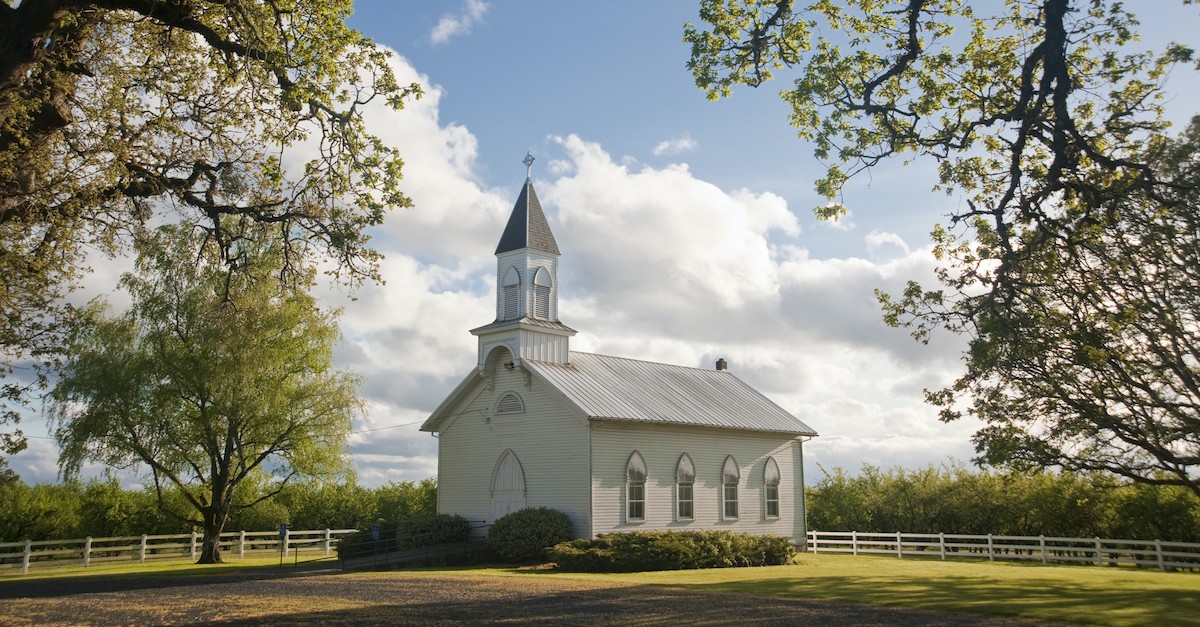
Have you ever read Prevailing Prayer by D. L. Moody? How about The Christian’s Secret of a Happy Life by Hannah Whitall Smith? Or My Utmost for His Highest by Oswald Chambers?
If so, then you have been impacted by the long-reaching effects of the Holiness movement. This movement spread throughout America and in some places in Europe during the 19th century. Emphasizing personal holiness and love for God, the Holiness movement brought revivals that influenced evangelistic preachers, such as D. L. Moody. It also led to the development of the Higher Life Movement and Keswick theology, which impacted Christians like Oswald Chambers and Amy Carmichael.
In addition to these significant believers in history, the movement has given us many denominations that have a global presence. Those within Holiness traditions have been instrumental in spreading the gospel to people around the world and bringing a renewed commitment to serving the poor and oppressed. Because of this, all believers would benefit from learning more about the Holiness movement. Studying church history can bolster our faith and connect us to the worldwide body of Christ.
Let’s consider five things that every Christian should know about Holiness churches and the Holiness movement.
Photo Credit: ©Getty Images/Drew Buzz

1. The Holiness Movement Arose from John Wesley’s Teachings
In his essay, “A Plain Account of Christian Perfection,” John Wesley discussed sanctification in the life of the believer, arguing that Christians can achieve “perfection” in this life. He emphasized that like justification, sanctification is given as a gift from God.
To clarify, in his essay, he defined Christian perfection as “loving God with all our heart, mind, soul, and strength. This implies that no wrong temper, none contrary to love, remains in the soul; and that all the thoughts, words, and actions are governed by pure love.” Wesley did not prefer or contend for the term “sinless,” though some Christians think that he was a proponent of sinless perfection.
Later, Phoebe Palmer was influenced by Wesleyan teaching since she had grown up as a Methodist. In 1837, she reported experiencing entire sanctification. One of her children had died the previous year, and she decided to give all to the Lord. As a result of her experience, she began spreading the concept of entire sanctification or Christian perfection based on Wesley’s teachings. She modified the concept somewhat, making it simpler by emphasizing the need for only three steps: “consecration, faith, and testimony” (Charles Edward White, “Holiness Fire-Starter,” Christian History Institute, 2004, https://christianhistoryinstitute.org/magazine/article/holiness-fire-starter).
The Holiness movement thus began with Phoebe Palmer as the central driving figure. Today, she is commonly referred to as “the mother of the Holiness movement” since she worked to spread the idea of entire sanctification through revivals and her writings, including books such as The Way of Holiness and Promise of the Father. The movement grew throughout America and parts of Europe.
John Wesley’s teachings were the fuel for the fire of the Holiness movement, while the driving force was Phoebe Palmer and others like her.
Photo Credit: Public Domain

2. Holiness Teachings Emphasize Entire Sanctification and Baptism of the Holy Spirit
The idea of entire sanctification or Christian perfection was a central teaching in the Holiness movement. According to Palmer and others within this tradition, people can experience complete holiness by loving God with all their hearts and giving all to Him. This usually occurs at a crucial moment in a person’s life and involves an emotional crisis.
Connected to Holiness doctrine is the idea that Christians experience entire sanctification when the Holy Spirit baptizes them. Today, many people refer to this as receiving the “second blessing,” a term derived from John Wesley. Christians receive the “first blessing” of being born again through placing faith in Jesus’ death and resurrection but receive a “second blessing” when the Holy Spirit baptizes them, and they are made perfect in love. Perhaps the emphasis on the Spirit’s empowerment is why some within the Holiness movement started to focus on spiritual experiences such as healing and speaking in tongues.
Some Christians have misrepresented or not fully understood what Holiness theologians mean by “Christian perfection,” believing it means sinlessness. However, those within the Holiness tradition urge that entire sanctification is a biblical concept and does not refer to sinless perfection. Verses like Leviticus 11:45 and 1 Peter 1:16 command us to be holy just as the Lord is holy. Other passages in Scripture also show that we have been given a new life, one meant to be lived in holiness and service to God (2 Corinthians 5:17; 1 Thessalonians 4:7; Hebrews 12:14). According to Holiness teachings, Christians who hunger for righteousness and grow in maturity can achieve this type of spiritual walk by receiving entire sanctification or Christian perfection as a gift from the Lord.
Photo Credit: ©GettyImages/Arthit_Longwilai

3. The Church of the Nazarene and the Church of God Came from This Movement
Although the Holiness movement started within Methodism and spread to other Protestant denominations, by the end of the 19th century the Methodists wanted to distance themselves from those who followed Holiness teachings. As a result, many left the Methodist church and started new denominations. These included denominations like the Church of the Nazarene and the Church of God.
The Church of the Nazarene (founded in 1908) continues in the Wesleyan-Holiness tradition by emphasizing faith in Jesus, entire sanctification, and personal holiness, which they define as Christlikeness. The denomination has a mission-driven purpose of spreading the gospel to people around the world and discipling them to become more like Jesus. According to a 2023 statistical report, there are “30,747 churches in the denomination.” People who identify as members of the Church of the Nazarene can be found across the world, including places like Africa, Mesoamerica, South America, Asia, North America, and Eurasia.
More charismatic in theology and Pentecostal in approach to worship, the Church of God was founded in 1886. Members are committed to growing in holiness and depend on the power of the Holy Spirit to spread the gospel and make disciples of all nations. Personal holiness and empowerment come from experiencing the baptism of the Holy Spirit.
Although the Church of God started in Tennessee, the denomination has planted churches around the world. As they report on their website, “Today Church of God ministries include more than 7 million members in 178 nations and territories.”
Other denominations in the Holiness tradition include the Free Methodist Church of North America, the Wesleyan Methodist Church, the Christian and Missionary Alliance, and the Salvation Army.
Photo Credit: ©GettyImages/RobertCrum

4. The Holiness Movement and Churches Differ from Pentecostalism
Some individuals and churches equate Holiness with Pentecostalism because of the Holiness movement’s historical emphasis on an emotional experience at the time of entire sanctification and the “second blessing” of the Holy Spirit. People may also confuse these two movements since many denominations in the Holiness tradition believe in speaking in tongues and exercising the gift of healing. Their worship may also seem charismatic in nature.
Church historians recognize the vital role that the Holiness movement played in sparking Pentecostalism and its subsequent revivals in the 20th century. Both have similarities, which is understandable given that Pentecostalism sprang from the Holiness movement and adopted beliefs and doctrines from this tradition. However, the Holiness movement and related denominations are different from Pentecostalism.
Not all within the Holiness tradition agree about the use of sign gifts, such as healing or speaking in tongues. In contrast, Pentecostal churches often include these areas as important points of doctrine and worship. Christians should recognize the diversity in these movements and avoid using blanket terms when referring to specific denominations.
Photo Credit: ©GettyImages/Boonyachoat

5. Evangelism and Social Compassion are Major Components in the Holiness Tradition
As the Holiness movement spread through revivals, there was an increased commitment to evangelism and helping those in need. Phoebe Palmer preached the gospel and worked to start the Five Points Mission in New York, which served women and children living in poverty. For Palmer and others within this tradition, a life of holiness could not be separated from gospel-centered action. Inward change produces outward results.
Today, churches within the Holiness tradition continue to emphasize evangelism and world missions, as well as serving the poor and needy. The presence of the various Holiness denominations around the world testifies to their commitment to fulfilling the Great Commission (Matthew 28:18-20). In addition to sharing the gospel and making disciples, denominations in the Holiness tradition seek to help the poor and oppressed. They take seriously the Bible’s command to love others as a natural overflow of their wholehearted love for God (Mark 12:30-31). We see this represented in mission statements and official documents, such as the Church of the Nazarene’s 2023 Manual. As they wrote, “A life of Christian holiness will entail efforts to create a more just and equitable society and world, especially for the poor, the oppressed, and those who cannot speak for themselves” (p. 45).
Regardless of our denomination, we can give thanks to the Lord for those in the Holiness tradition spreading the gospel and for the many organizations, past and present, they have created to serve those in need. Through the lives of believers in this tradition, we find practical examples of how a call to holiness affects all areas of life.
Photo Credit: ©iStock/Getty Images Plus/Xesai

Originally published Tuesday, 09 July 2024.
